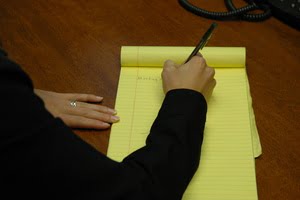Physical therapy can help with your back strain. Physical therapists are experts in the way your body moves and treating musculoskeletal disorders including back strain.
Your first physical therapy visit for your back strain
During your first visit to a physical therapist for your back strain, he or she will ask about your activities that led to your injury including other related medical history. Your therapist will perform a thorough physical examination and assessment. Your physical therapist will then create a comprehensive treatment plan to address your specific problems and goals.
Physical therapy treatment options for back strain
Depending on your specific problems, needs and goals, your physical therapist may provide you with a combination of the following:
Ice or hot pack application
For injuries such as back strain, ice application is effective in managing pain and inflammation during the first few days following an injury. Your physical therapist will apply over your injury an ice pack wrapped in towel for about 20 minutes.
If you have no swelling, your therapist may apply a hot pack instead. Heat can increase circulation to your injured muscle and reduce stiffness.
Electrical stimulation
A transcutaneous electrical nerve stimulator (TENS), which is a battery-operated device that sends small amounts of current to your skin, may be used by your physical therapist. The current is believed to block pain signals to your brain. In addition, TENS may help your brain to release endorphins, according to the National Institute of Neurological Disorders and Stroke (NINDS). Endorphines are chemical signals that have pain-relieving properties.
Ultrasound
Your therapist may use a therapeutic ultrasound to warm your back muscles and help them to relax. This may be done before massage or your stretching exercises.
Exercises (Stretching and Strengthening)
Your physical therapist will teach you range of motion exercises and stretching exercises to help lengthen your tight back muscles. This may include pelvic tilting, single and double knee to chest stretch, hip rolling and cat arching stretch.
In addition to stretching exercises, your therapist will also teach you strengthening exercises to help strengthen your back muscles and promote overall fitness.
Your therapist will guide you as you perform your exercises. He or she may also instruct you to continue icing / heat application and performing your exercises when you get home. Follow your therapist’s instructions to avoid re-injuring your back muscles.
Patient education
One important aspect of physical therapy is to teach you about your condition and provide you with informations on how to prevent repeat injury of your back muscles. In addition, your physical therapist will teach you proper techniques of lifting objects and other body mechanics that you should observe.
These are some of physical therapy treatments for back strain. Your physical therapist may also provide you with other treatment options based on your level of fitness and specific problems that you might have.
Sources:
Sprains and Strains. National Institute of Arthritis and Musculoskeletal and Skin Diseases (NIAMS). Accessed on February 17, 2011
Physical Therapy for Low Back Pain. Physical Therapy Notes. Accessed on February 17, 2011
Back Injuries. Medline Plus, National Library of Medicine (NLM). Accessed on February 17, 2011
Low Back Stretches for Tight Back Muscles. Physical Therapy (PT) Notes. Accessed on February 17, 2011
Low Back Pain Fact Sheet. National Institute of Neurological Disorders and Stroke (NINDS). Accessed on February 17, 2011




